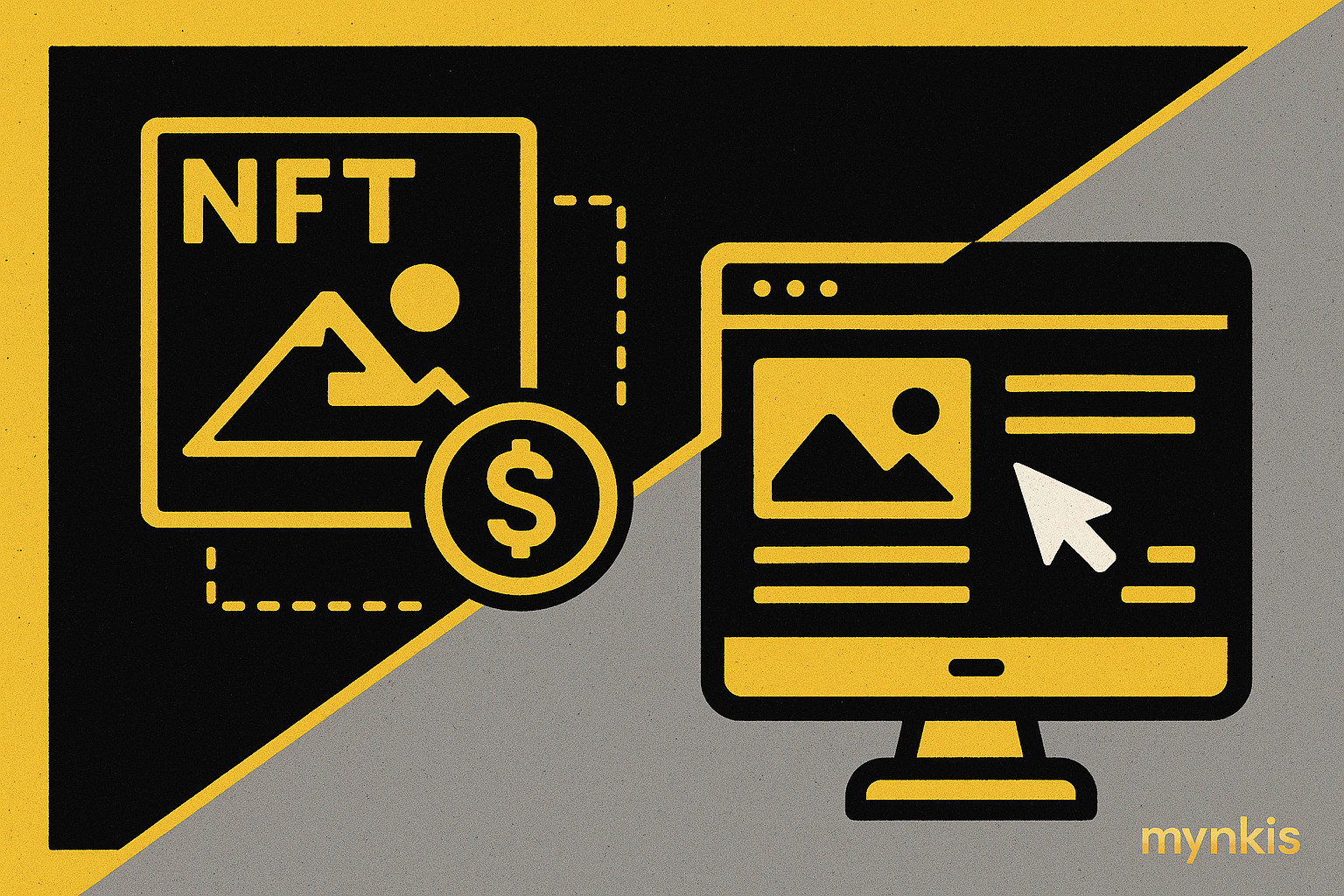Schedule a Demo
Non-fungible tokens, or NFTs, have taken the digital world by storm. These unique digital assets, which cannot be duplicated or divided, are revolutionizing the way we interact with art and content online. From digital art to virtual real estate, NFTs offer unprecedented ownership and value in the digital realm. As a tech enthusiast and someone who keeps a close eye on emerging trends, I've noticed how large organizations are starting to explore integrating NFTs into their web design strategies.
Incorporating NFT art and digital assets into website design isn't just a trend—it's a strategic move. When considering custom software development for your organization, leveraging NFTs can enhance the aesthetic appeal and functionality of your site. Whether it's for internal tools or customer portals, using NFTs can add a layer of uniqueness and interactivity that traditional designs can't match.
Digital art has long been a part of website design, but the integration of NFTs elevates this to a new level. Imagine a homepage featuring dynamic, exclusive artwork that your visitors can interact with or even purchase directly. This isn't just about aesthetics; it's about creating an immersive user experience that can differentiate your brand in a crowded market. In my work with operations managers, I've seen how such innovations can lead to increased engagement and a deeper connection with your audience.
Your brand identity is crucial, especially when it comes to large organizations. NFTs offer a way to express and enhance that identity through unique, branded digital assets. These can range from one-of-a-kind artworks to branded digital collectibles. By integrating these into your enterprise web solutions, you're not just showcasing creativity but also reinforcing your brand's commitment to innovation and exclusivity.
When it comes to customer portals, the goal is often to provide a seamless, efficient user experience. Integrating NFT art can actually aid in this process. For instance, you could use NFTs to personalize user dashboards or even as rewards within the portal. This not only improves user engagement but also can create a buzz around your service. I recall working with a client who introduced a 'NFT of the month' feature in their customer portal, and the engagement metrics soared.
While the idea of incorporating NFTs into your website design sounds exciting, there are technical aspects to consider. This includes blockchain integration, security measures, and ensuring that the performance of your site isn't compromised. As part of custom software development, these considerations need careful planning. Consulting with experts who understand both web development and blockchain technology is crucial to executing this seamlessly.
Using NFTs isn't without its challenges, especially when it comes to legal and compliance issues. From copyright to smart contract legality, there are many factors to navigate. It's important to stay informed about the regulations that affect NFT usage in different regions, especially if your organization operates internationally. Ensuring compliance can help prevent potential legal hurdles that could affect your digital strategy.
Looking ahead, the role of NFTs in business, particularly in web design and enterprise web solutions, is only going to grow. We're seeing more and more organizations adopt NFTs not just for their uniqueness but also for their potential in creating new revenue streams and enhancing brand engagement. As this trend continues, staying ahead of the curve will be essential for large organizations.
Let's look at a real-world example of how NFTs have been successfully integrated into website design. A well-known tech company introduced an exclusive NFT art gallery on their customer portal. Not only did it draw in more traffic, but it also increased user retention by offering an engaging and interactive experience. They used smart contracts to ensure the authenticity and exclusivity of the art, further enhancing their brand's value. Based on available research, individual results may vary, but this case study highlights the potential benefits.
Internal tools within large organizations can also benefit from the inclusion of NFT art and digital assets. Imagine using NFTs to gamify training modules or to reward employees for milestones. This not only boosts morale but can also increase productivity. As someone who has helped organizations with their internal software solutions, I've seen firsthand how these innovative approaches can transform internal processes and employee engagement.
While the opportunities are vast, integrating NFTs into your website design isn't without its challenges and risks. From fluctuating NFT values to potential scams, there's a lot to consider. It's important to weigh the benefits against the potential pitfalls. Transparency and due diligence are key to navigating these challenges successfully.
One of the key aspects of incorporating NFTs into web design is balancing aesthetics with functionality. Your site should remain user-friendly and efficient, even with the added layer of NFT art. This requires a design approach that prioritizes both the visual appeal and the usability of the site. Finding the right balance can set your organization apart and ensure that your website serves both its primary functions and enhances your brand's image.
As with any new technology, embracing NFTs in your custom software development and web design requires a responsible approach. This means not only keeping up with the latest trends but also ensuring that you're contributing to the ethical use of NFTs. Whether it's through transparent practices, engaging with the NFT community, or supporting emerging artists, there are many ways to make a positive impact with this new technology.
Lastly, let's not forget the role that digital assets, including NFTs, can play in SEO. While the primary focus might be on design and user experience, the integration of unique and engaging content can also help with search engine rankings. By offering exclusive content and interactive features, you can attract more organic traffic and enhance your SEO strategy.
